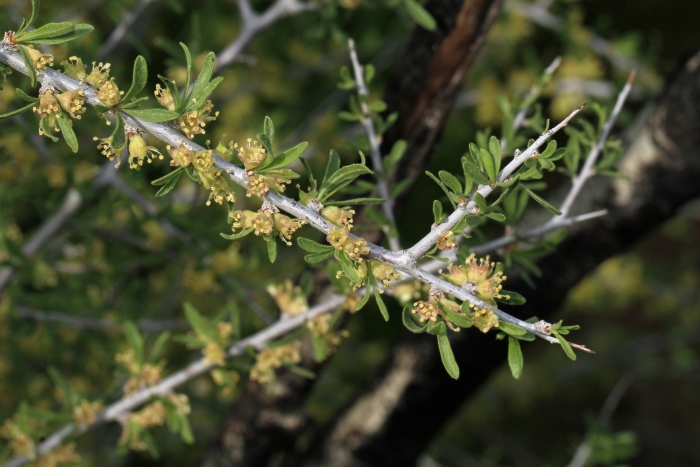Desert Almond
(Prunus fasciculata)
Desert Almond (Prunus fasciculata)
/
/

Walter Siegmund (talk)
CC BY-SA 4.0
Image By:
Walter Siegmund (talk)
Recorded By:
Copyright:
CC BY-SA 4.0
Copyright Notice:
Photo by: Walter Siegmund (talk) | License Type: CC BY-SA 4.0 | License URL: https://creativecommons.org/licenses/by-sa/4.0 | Uploader: Wsiegmund | Publisher: Wikimedia Commons | Title: Prunus_fasciculata_7792.JPG | Notes: {{Information |Description= |Source=[http://www.flickr.com/photos/98515490@N00/119314079/ 0603mr21] |Date=March 12, 2006 |Author=[http://www.flickr.com/people/98515490@N00 wang leon] from Nanjing, China |Permission= |other_versions= }} [[Categor |




















































Estimated Native Range
Summary
Prunus fasciculata, commonly known as Desert Almond, is a deciduous shrub native to desert washes, dry slopes, and chaparral of the Southwestern United States and Northwestern Mexico. This species is particularly adapted to arid environments and is often found in the Mojave and Sonoran Deserts. It typically grows to a height of 3-10 feet (1-3 meters) with a similar spread, and it forms thickets from root sprouts. Desert Almond has small, inconspicuous greenish-white flowers that bloom from March to May, which are fragrant and attract bees for pollination. The plant is long-lived and produces small, almond-like nuts that are an important food source for wildlife.
Desert Almond is valued for its drought tolerance and ability to thrive in harsh desert conditions, making it suitable for xeriscaping and naturalistic plantings in arid regions. It is also used for erosion control on dry slopes. In cultivation, it requires minimal care, thriving in full sun with low water needs once established, and it is well-adapted to soils with fast or medium drainage. While it is dioecious, with separate male and female plants, gardeners should plant both sexes if nut production is desired. Potential problems include susceptibility to Xylella fastidiosa, a bacterial disease that can cause leaf scorch.CC BY-SA 4.0
Desert Almond is valued for its drought tolerance and ability to thrive in harsh desert conditions, making it suitable for xeriscaping and naturalistic plantings in arid regions. It is also used for erosion control on dry slopes. In cultivation, it requires minimal care, thriving in full sun with low water needs once established, and it is well-adapted to soils with fast or medium drainage. While it is dioecious, with separate male and female plants, gardeners should plant both sexes if nut production is desired. Potential problems include susceptibility to Xylella fastidiosa, a bacterial disease that can cause leaf scorch.CC BY-SA 4.0
Plant Description
- Plant Type: Shrub
- Height: 3-6 feet
- Width: 3-6 feet
- Growth Rate: Slow
- Flower Color: N/A
- Flowering Season: Spring
- Leaf Retention: Deciduous
Growth Requirements
- Sun: Full Sun
- Water: Low
- Drainage: Fast, Medium
Common Uses
Bee Garden, Bird Garden, Butterfly Garden, Edible*Disclaimer: Easyscape's listed plant edibility is for informational use. Always verify the safety and proper identification of any plant before consumption., Fragrant, Low Maintenance, Rabbit Resistant
Natural Habitat
Native to desert washes, dry slopes, and chaparral of the Southwestern United States and Northwestern Mexico
Other Names
Common Names: Desert Peach, Wild Almond
Scientific Names: , Prunus fasciculata, Prunus fasciculata var. fasciculata,
GBIF Accepted Name: Prunus fasciculata (Torr.) Gray